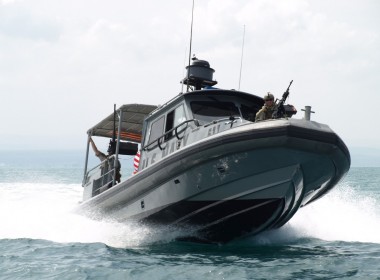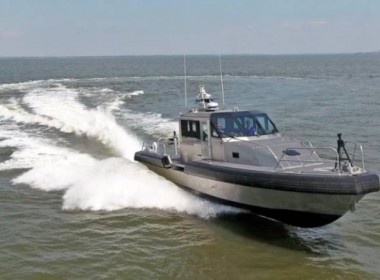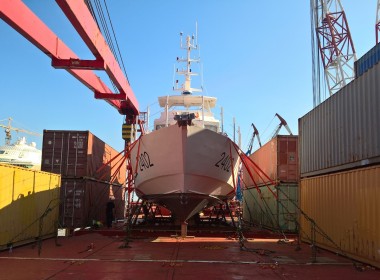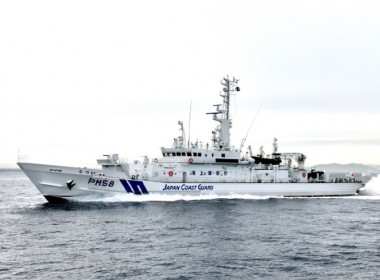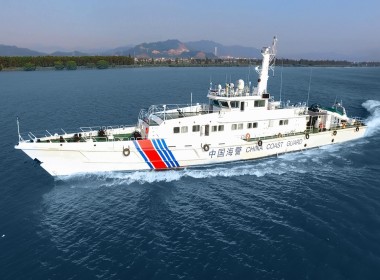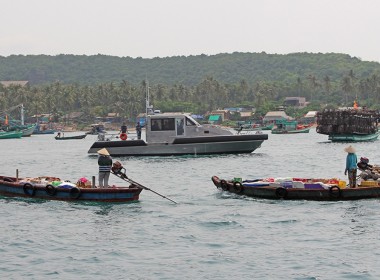FEATURE | The long blue line: coast guard small boat ops in Vietnam
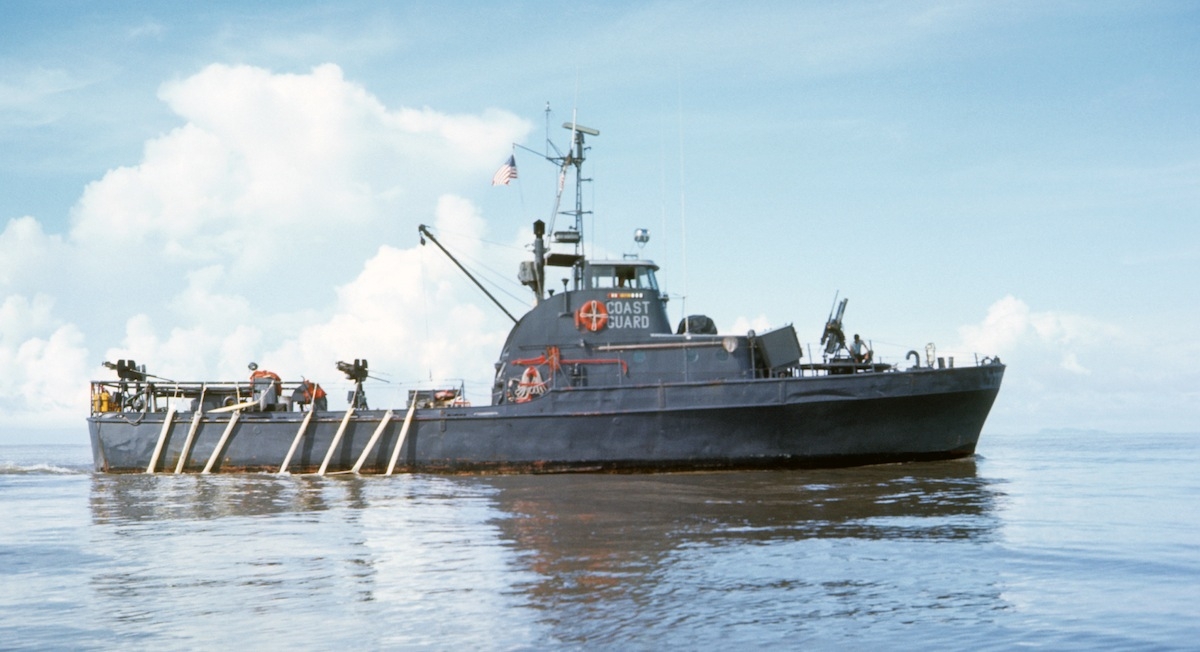
During the Vietnam War, the 25-metre “Point”-class cutters of Squadron One supported small boat reconnaissance missions. Called “Salem Operations” by naval strategists, or “Sitting Duck Ops” by coast guard crews, these missions were similar to Special Forces reconnaissance operations and required the use of the patrol boats’ small boat.
“If our aim is to control the riverbanks, this will have to be done by ground forces. To look at it another way, we are asking our untrained small boat crews to do the jobs really in the province of [Navy] SEALs or RACs [Army Riverine Assault Craft forces].” – Cmdr. Charles Blaha, executive officer, Coast Guard Operations-Vietnam, 1968
Known as a “skimmer” by some coast guardsmen, or “bait” by others, the small boat used on the 25-metres was a 4.0-metre fibreglass Boston Whaler, the size of a large dinghy. Weapons for these missions included an M60 machine gun with bandoliers of extra rounds, M16s, and an M79 grenade launcher with spare grenade rounds.
A well-worn flak vest and World War II-vintage battle helmet provided the only protection from automatic weapons fire or rocket propelled grenades. In addition, the Whaler was equipped with an underpowered and unarmored 35hp (26kW) outboard motor, which was vulnerable to enemy fire.
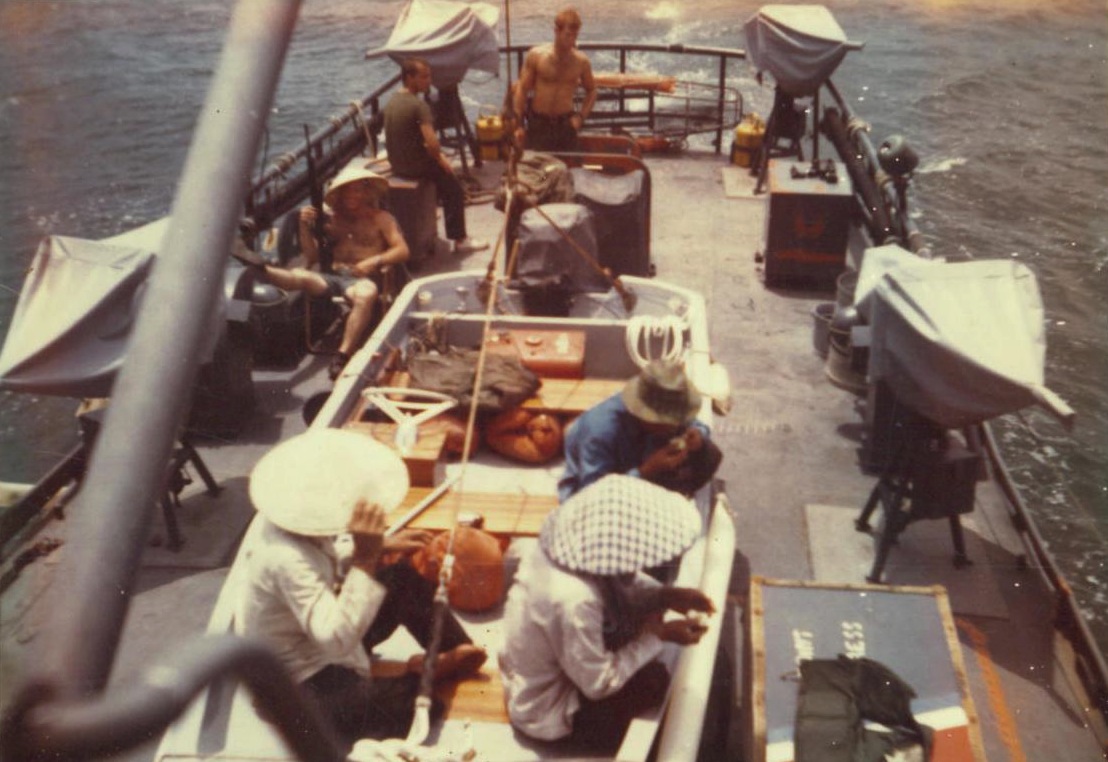 Stern of a 25-metre WPB showing the typical size and arrangement of the Boston Whaler-style small boat. Photo: Gordon M. Gillies.
Stern of a 25-metre WPB showing the typical size and arrangement of the Boston Whaler-style small boat. Photo: Gordon M. Gillies.
After the navy launched “Operation SEALORDS (Southeast Asia, Ocean, River and Delta Strategy)” in 1968, small boat operations became frequent. For example, in October 1968, the skimmer on board the Point Cypress participated in a canal probe on the Ca Mau Peninsula in which it came under heavy enemy fire, but Point Cypress and another patrol boat managed to destroy enemy river barriers, fortified structures, bunkers and armed sampans before withdrawing.
On November 9, Point Cypress’s skimmer deployed on a gunfire damage assessment mission near Hon Da Bac Island to assess a fire support mission just completed by another US vessels. During this mission, the small boat located and destroyed four enemy sampans.
By December, Point Cypress conducted almost daily small boat operations. On Wednesday, December 4, the cutter rendezvoused with a Royal Thai navy gunboat to embark Cmdr. Charles Blaha, deputy commander for Coast Guard operations in Vietnam. Blaha visited the patrol boat to familiarise himself with cutter operations and evaluate the effectiveness of small boat operations.
Blaha planned to deploy the next day with the skimmer, which was to determine the depth of local waterways for navy swift boat operations. Point Cypress’s executive officer, Lt. j.g. Gordon Gillies, would serve as coxswain and Fireman 1/c Heriberto Hernandez volunteered to ride point in the bow.
At 2:30 pm, on Thursday, December 5, Blaha, Gillies and Hernandez deployed in Point Cypress’s small boat and began their survey of the nearby estuaries. After they carried out the mission, they received orders to destroy the nearest village structures, or “hooches,” using their M79 grenade launcher and highly flammable night illumination rounds.
As the small boat approached the hooches, the crew noticed an armed Viet Cong guerilla entering a shore-side bunker. Blaha fired a volley at the fortification with his M16 and the Viet Cong returned fire. As soon as he heard the gunfire, Gillies gunned the engine and the Whaler motored away from shore, but it was too late to dodge hostile fire. In his after-action report, Blaha wrote “For me, this incident was a moment of terror I will never forget—not only because of what did happen, but because I see that it could happen again and again.”
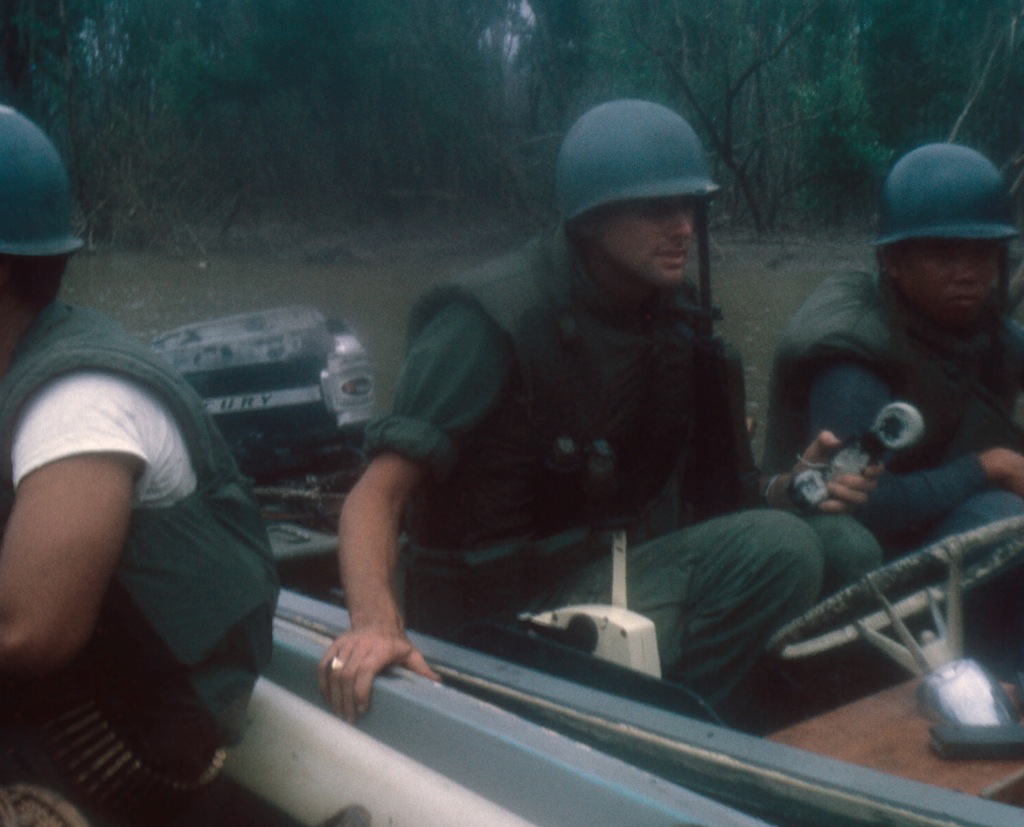 A small boat mission showing dense cover provided by foliage along Vietnam’s inland waterways. Photo: Gordon M. Gillies.
A small boat mission showing dense cover provided by foliage along Vietnam’s inland waterways. Photo: Gordon M. Gillies.
With only their flak vests to protect them against enemy rounds, each crew member suffered severe bullet wounds. The wounded officers were treated aboard the cutter and medivaced to a hospital near Saigon before returning stateside for extended medical care. Hernandez died of his wounds before he could be evacuated to a hospital. His body was returned with a Coast Guard escort to San Antonio where he was interred with full military honours. Hernandez posthumously received the Purple Heart and Bronze Star medals and the service named the Fast Response Cutter Heriberto Hernandez in his honour.
Typically carried out under cover of darkness, Salem Ops missions required the small boats to probe the canals and waterways of South Vietnam. These missions gathered intelligence regarding enemy weapons, troop movements, fortified positions and bunkers. Small boat crews also took depth soundings for the larger patrol boats, gathered navigation information, observed US artillery barrages and provided damage assessments for fire support missions. However, the small boat operations often entered enemy-held territory under the watchful eye of the Viet Cong. For small boat crews, these missions likely brought new meaning to the old coast guard saying, “You have to go out, but you don’t have to come back.”


